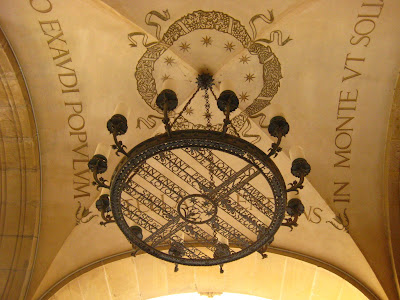 |
| Flores del Frijol de palo (Cajanus cajan). |
En este día caliente de verano norteño recordé uno de mis cultivos tropicales favoritos, el Gandul o Frijol de Palo (Cajanus cajan), también conocido como Guandul, Quinchoncho, Gandú, entre otros nombres comunes con los que se le conoce en otros países latinoamericanos. En inglés se le denomina Pigeon Pea mientras que en los países francófonos de África Occidental se le llama Pois d'angole.
En Costa Rica se le cultiva en zonas tropicales húmedas de la vertiente del Caribe y en el Pacífico sur en donde crece sin mayores dificultades en suelos ácidos y pobres como los ultisoles de color rojizo comunes en las tierras bajas de ambas vertientes, en especial en la zona sur del país. El gandul es, efectivamente, una de las leguminosas más adaptables y tolerantes de las sequías.
El gandul es originario de India en donde se ha cultivado por más de 4000 años. Su uso se extendió luego a África Oriental en donde se desarrollaron frijoles de grano más grande cuyo uso se esparció por el resto del continente. De África pasó a América con el comercio de esclavos de donde se cree que proviene su nombre común, posiblemnte originario de Gabón según el botánico costarricense Jorge León en su excelente libro titulado Botánica de los Cultivos Tropicales.
En las zonas del Pacífico Central y Sur de Costa Rica este frijol crece hasta en suelos erosionados en donde requiere poco mantenimiento. Como buena leguminosa el gandul es un buen fijador de nitrógeno (¡de hecho es la leguminosa que produce más N biomásico por hectárea!) además de ser un excelente forraje de alto contenido proteínico para el ganado bovino, cerdos, cabras y ovejas.
¡Pero lo mejor de todo es su uso culinario y sus propiedades nutricionales! Los frijoles del gandul contienen hasta 26% de proteína y son de buen sabor. Aunque en Costa Rica no es tan popular como en otros países latinoamericanos, en la zona sur del país es quizás en donde más se le consume (debido a la influencia cultural panameña evidente en esa zona). Un simple arroz con gandules o gandules guisados son un excelente almuerzo después de una caminata o un día de trabajo bajo el sol tropical. Otra bondad del gandul es que produce poca flatulencia, una característica que algunos individuos proclives a sinfonías "pedológicas" indeseadas agradecerían.
El gandul es indudablemente uno de esos cultivos tropicales altamente prometedores en el contexto actual de cambio climático, degradación de los suelos y pobreza. De hecho su uso se ha propuesto como de gran potencial en regiones como África en donde, como mencioné anteriormente, se cultiva desde hace muchísimos años. También es de gran potencial para su uso en sistemas agroforestales, mi sistema agrícola favorito en los trópicos.










